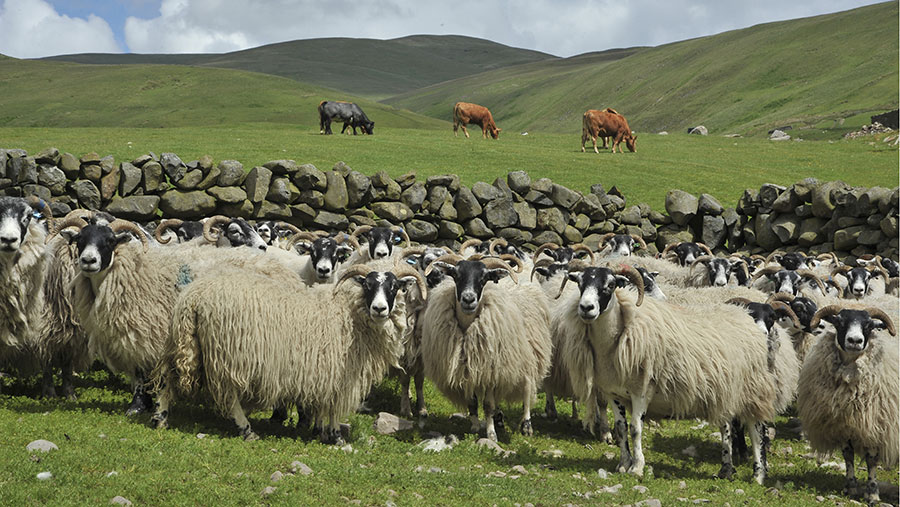Less than a third of Scottish livestock farms make a profit
 © John Eveson/FLPA / imagebroker/REX Shutterstock
© John Eveson/FLPA / imagebroker/REX Shutterstock
Most Scottish beef and sheep farms are still not profitable, despite lower feed costs and better weather, says an industry report on the 2014 Scottish calf and lamb crop.
Prime cattle prices have pressured bottom lines on finishing units, while store trade, both for cattle and lambs, has generally been more positive, according to Quality Meat Scotland’s (QMS) latest profit analysis, Cattle and Sheep Enterprise Profitability in Scotland.
The proportion of finished cattle enterprises reporting a positive net margin fell to 29%, down from 72% the year before, with only half the number of rearer-finishers seeing positive net margins compared with the 2103 results.
See also: UK dairy farmers can look to US for ways to beat volatility
There was no net margin for businesses finishing cattle on forage beyond 22 months of age.
Sheep: Top-third flocks
- Rear seven to 15 more lambs a 100 ewes
- Produce 5kg liveweight more lamb meat a ewe – 16% more lamb produced a ewe
- Achieve £13-14 more in lamb sales a ewe above the average
Sucklers: Top-third herds
- Have a higher calf rearing percentage
- Sell heavier calves
- Altogether achieve a higher liveweight sold (+25% a cow)
- Achieve 6-10p/kg liveweight more for calves sold
Lamb quality
- Highest since May 2005 – 83% of Great Britain lambs achieved at least an R3L grading at the start of the 2014 season. Improved weather helped winter ewe condition and lambing in spring.
Meanwhile, the proportion of sheep farms enjoying a positive net margin increased from 10% to 15%, with 75% of lowland flocks reporting a positive net margin.
The biggest losers were hill farms, seeing flocks lose 110p/kg liveweight sold and sucklers losing 189p/kg liveweight.
Lowland sheep enterprises and cereal finished beef were the exceptions to the rule, both managing positive net margins after all costs had been accounted for, including replacement costs, variable costs, fixed costs, labour (including the value of unpaid family labour), working capital and rental value.
Cereal beef finishers achieved a selling price of 201p/kg after a total cost of 196p/kg liveweight sold, while lowland sheep flocks made a 22p/kg liveweight sold margin, with total costs of 181p/kg liveweight sold compared with a selling cost of 203p/kg liveweight sold.
Gross margins for cereal-based beef finishers fell to £170 a head, compared with £226 a head the previous year, with 73% of businesses surveyed enjoying a positive net margin, averaging £55 a head.
Opting to sell calves at weanling rather than yearling age was worth an extra £86 a cow to farms in less favoured areas (LFAs), with each system reporting gross margins at £312 a cow and £398 a cow respectively.
Non-LFA suckler herds saw average gross margins at £397 a cow, with 40% of businesses surveyed achieving a positive net margin. Rearer-finishers, meanwhile, saw gross margins considerably down on the year at £381 a cow and net margins remaining negative at -£217 a cow.
Sheep flocks benefited in higher productivity from better lambing conditions although suffered negative net margins in the hills, with losses at £22 a ewe compared with an £8 a ewe net margin on upland farms.
Lower sale weights and lower variable costs helped store lamb finishers achieve a higher net margin, at £6 a head.
Cattle and Sheep Enterprise Profitability in Scotland – 2015 edition, is available from QMS, The Rural Centre, West Mains, Ingliston, Newbridge EH28 8NZ or by calling 0131 472 4040, emailing info@qmscotland.co.uk or online on Quality Meat Scotland’s website.
